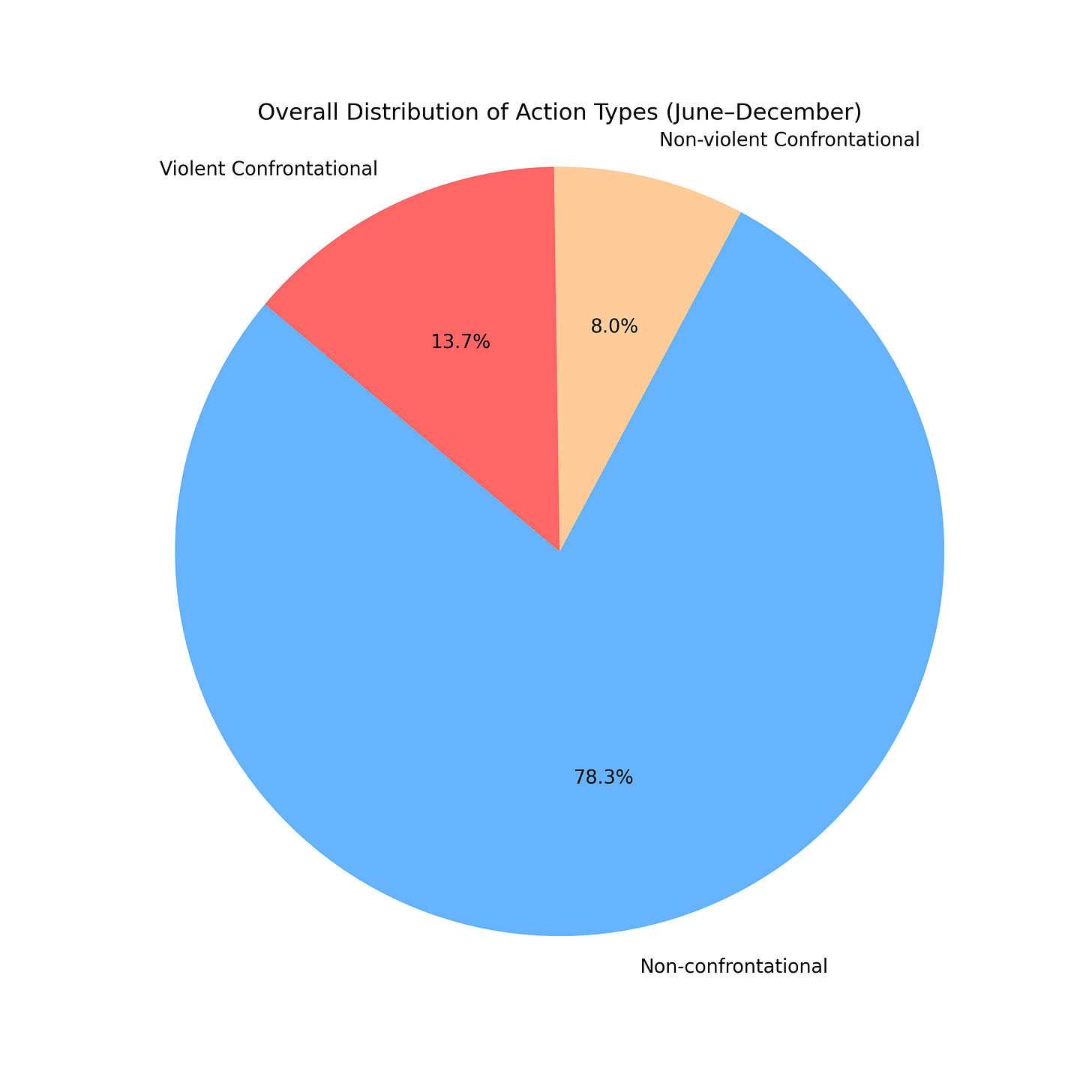Hong Kong Protest Myths Part 1: Are American cops worse protest-wise?
No. Stop making apple-orange comparisons.

It’s no surprise that a lot of CCP apologists 1like to equate American protest movements with the 2019 Hong Kong Protests 2 in a feeble attempt to prove that critics of the CCP (or the Hong Kong establishment), or at least the United States government, are hypocritical/carry double standards, which magically implies that the Chinese government is somehow in the right when dealing with the Hong Kong Protests and various authoritarian measures used to quell the protests were justified, or in some cases, lenient.
Before we tackle this topic, I’d like to respond to the potential thought-terminating cliches that I’m “an evil white Westerner who shouldn’t lecture about Hong Kong because the West did bad things”. Firstly, I grew up in Hong Kong and then left in 2020 due to the National Security Law (which, again, I might write about in the future), and I have Hong Kong citizenship. Secondly, whataboutism3 is perhaps the most common tool utilized by such CCP apologists to derail conversations when criticizing policy, and I’m writing this article specifically criticize such short-sighted comparisons.
Hong Kong Riot Police: Less Deaths?
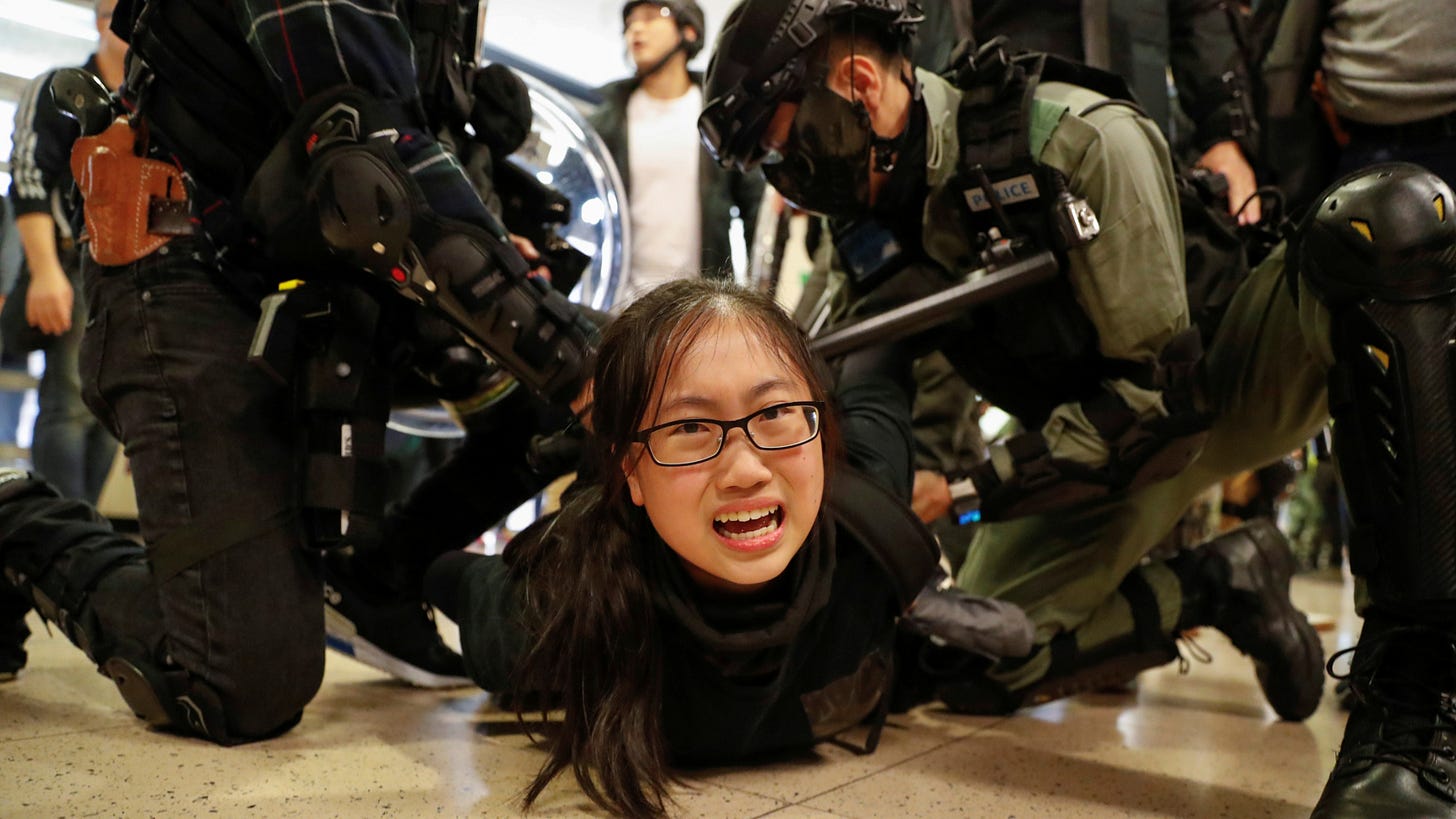
A common argument brought up by CCP apologists is that the Hong Kong Police kill less than the US Police, and that means that they’re actually less brutal, and in fact actually lenient towards the protestors/the general public. This operates under the rather assumption that police brutality is when “police kill people”, which is a huge oversimplification. According to the Britannica article on US police brutality:
The unwarranted or excessive and often illegal use of force against civilians by U.S. police officers.
This means that police brutality, by definition, implies that the force used by the police to handle a situation, whether that be an armed robbery, riot, protest, or hostage situation, is unreasonable and causes unnecessary harm to the suspect/criminal.
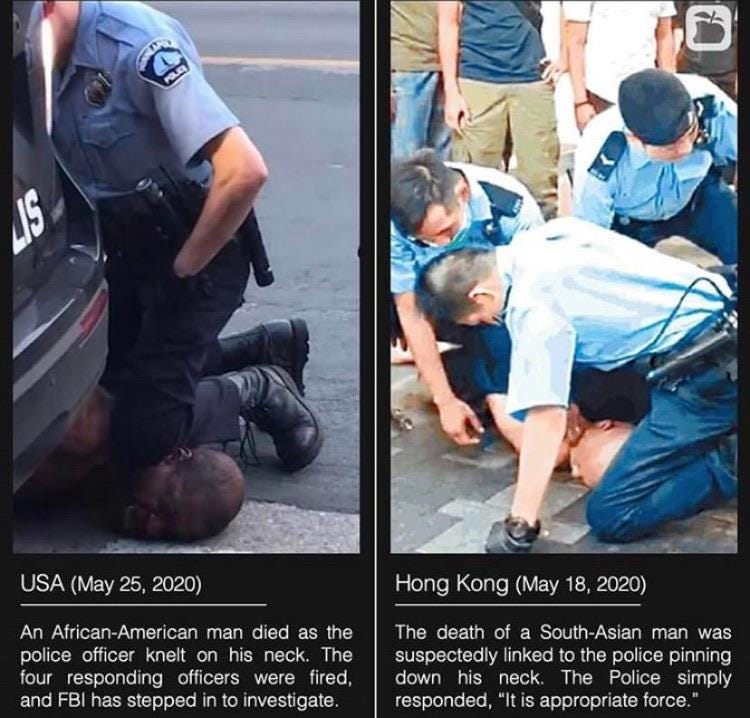
First and foremost, let’s start with this high IQ comment from a far left subreddit:
One of the most overly focused upon riots in history. According to Wikipedia:
Hong Kong riots: Deaths: 15 (2 directly, 13 indirectly), Arrested: 10,279
George Floyd protests: Deaths: 19, Arrested: 14,000
Also let's remember that these whole riots started because China wanted to close a glaring loophole in their extradition laws following an incident where a Hong Kong man killed his pregnant girlfirend [sic] in Taiwan and then escaped to Hong Kong scot free.
Leaving aside the rather misleading description of the motives and reasons for concern of the extradition bill itself, as well as moronic comments about how it’s a “color revolution”4, the statistics provided are misleading for 2 main reasons:
They do not adjust for per capita, which is a must since Hong Kong is a city with 7 million people whereas the George Floyd protests took place nationwide in a country with approximately 300 million people.
The causes of death and the perpetrators of said deaths are not mentioned here. Note that America is infamous for its Second Amendment Rights, so it makes sense that protests and riots have the potential to escalate and become more violent if people decide to bring guns.
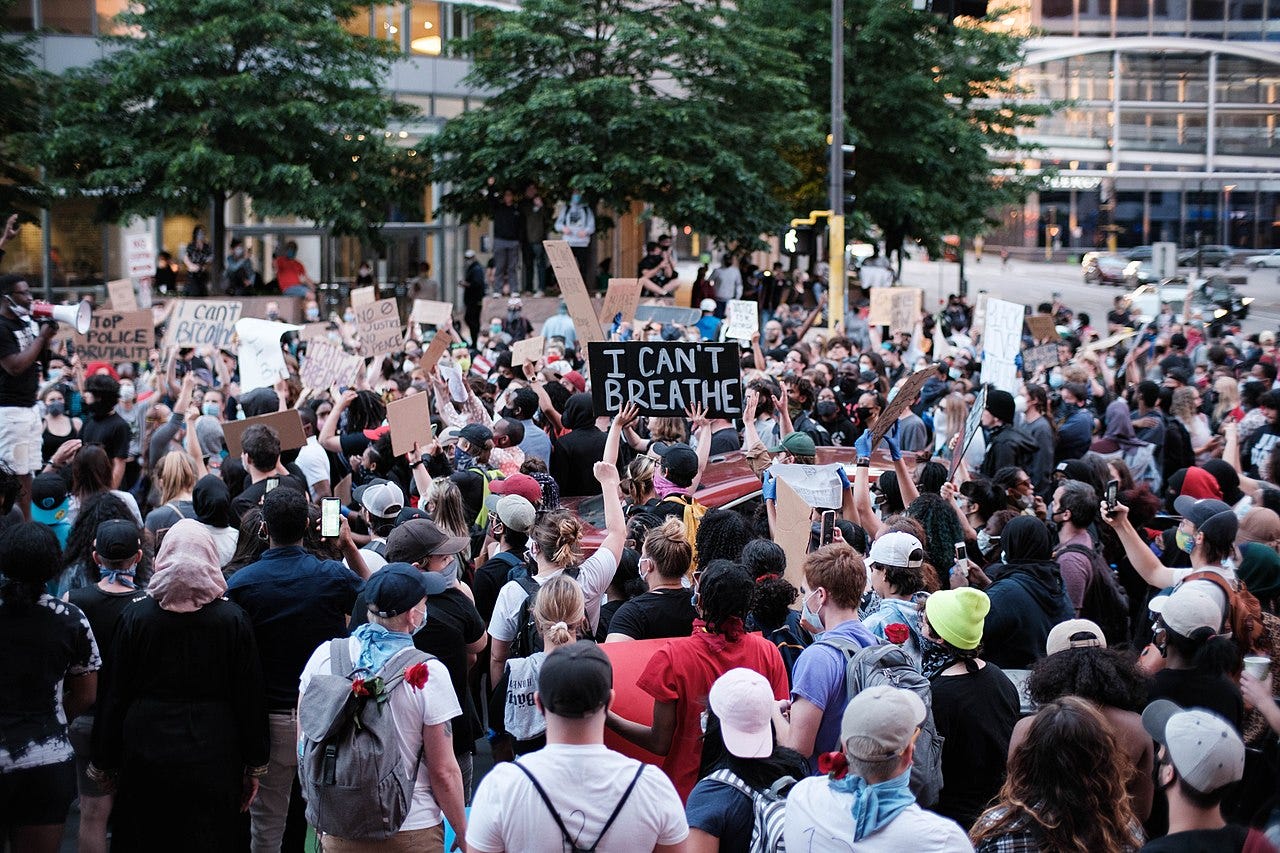
Firstly, to adjust for per-capita (actually per protestor, since not every person in Hong Kong or the US actually participated in these protests), I will be charitable enough to CCP apologists to deflate the Hong Kong number so that the per capita arrest/death rate is lower so that the estimate is smaller than it seems.use the maximum estimate for the Hong Kong protests, which is about 2 million.5 I will also not be counting the 13 indirect suicide cases as they did not take place during the protests themselves. On the George Floyd protests in total were estimated to have 15-26 million participants, and I will inflate the per capita arrest/death rate of the George Floyd by using the low estimate of 15 million in order to be less charitable to the US police.
Having adjusted for per capita, the death rate per protestor is 0.000001 deaths/protestor, whereas for the George Floyd protests, it is 0.00000127 deaths/protestor. This is of course using the most liberal estimate for the George Floyd protests, which implies that there were marginally (at most 1.27 times) more deaths during the George Floyd protests. However, if we were to use the 26 million participant figure, the death toll for the George Floyd protests becomes 0.000000731 deaths/protestor. It should also be noted that for smaller-scale protests/riots in the USA, zero deaths have been recorded in the Ferguson protests, and as of writing this, zero deaths in the anti-ICE protests.
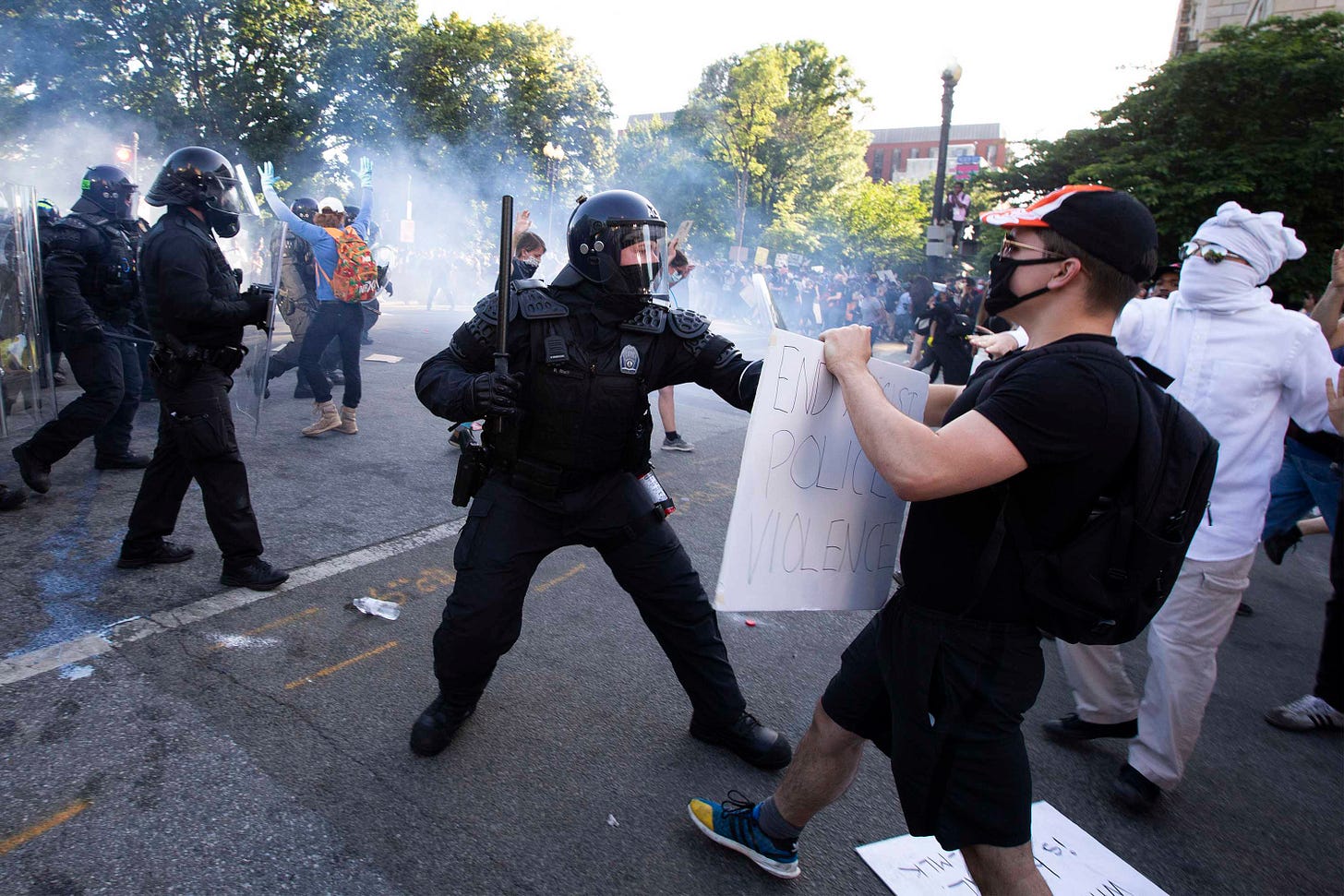
Now onto arrest figures. Whereas the Hong Kong protests had an arrest rate of 0.00514 arrests/protestor, the George Floyd protests (using the lower bound of participants to get an upper bound estimate) is 0.000933 arrests/protestor, which demonstrates that the HK protests have at least 5.5 times more arrests than the George Floyd protests.
That being said, there is more nuance to these figures which I will get into later, but it goes to show that a simple numerical comparison (like the one in the reddit comment) does not paint the full picture. For example, it would be completely fair to ask why the arrest rate for the Hong Kong protests is higher than that of the George Floyd protests. Was it because the Hong Kong protests were on average, more violent? If that is the case, what caused the Hong Kong protests to become more violent? Or were the police more brutal towards them? Those are questions we will get to later, but first we will have a look at the death tolls from both protest movements and what caused said deaths.

To begin this analysis, we first note that the 19 deaths provided by Wikipedia is disputed and the Wikipedia article itself cites a source claiming that at least 25 people died during the George Floyd protests. The reason why there is even a variation in death toll for the George Floyd protests is because it is hard to actually determine whether someone died for protest-related reasons or if they were merely in the vicinity. The source itself states that gun violence (due to the fact that the Second Amendment exists in America but no similar rights are enshrined in the basic law) is a major cause of deaths in the George Floyd protests:
At least 11 Americans have been killed while participating in political demonstrations this year and another 14 have died in other incidents linked to political unrest, according to new data from a non-profit monitoring political unrest in the United States.
Nine of the people killed during protests were demonstrators taking part in Black Lives Matter protests. Two were conservatives killed after pro-Trump “patriot rallies”. All but one were killed by fellow citizens.
The new data highlights the danger of the presence of guns during politically charged protests, and raises concerns about continued violence during and after election day, when many Americans anticipate delays, confusion and protests before the winner of the presidential race is confirmed.
On top of that, the vast majority of deaths were not caused by the police shooting at protestors. According to the Wikipedia article on violence during the George Floyd Protests, only 3 cases were police accidentally/intentionally killing protestors.
June 1: In Louisville, local restaurateur David McAtee was killed as a Louisville Metro Police and Kentucky National Guard curfew patrol fired at him.
June 1: In Las Vegas, police shot and killed Jorge Gomez, who was walking among protesters and reportedly reached for his firearm when he was shot.
June 2: In Vallejo, California, Sean Monterrosa, a 22-year-old man, was shot and killed by police while on his knees. Monterrosa lifted his hands, which revealed a 15-inch hammer tucked in his pocket police said they mistook for a handgun.
On the other hand, there are more cases of people dying in the crossfires especially during looting, and several cases in CHAZ. The most notable example of a police officer casualty was the death of David Dorn. So it’s not like police were massacring students like in Kent State.
As for the Hong Kong protests, only 2 deaths were recorded: The death of Chow Tsz-Lok and Luo Changqing, the former being a protestor who died in an accident and the latter who died in a skirmish between police and protestors. Hence, comparing the death tolls of these 2 protests tends to be an apples and oranges comparison.
To further emphasize that such comparisons between US protest deaths and Hong Kong deaths are not really done in good faith and do not hold up, no deaths were recorded in Ferguson during the 2014 riots and as of writing this, no deaths were recorded in the anti-ICE protests.
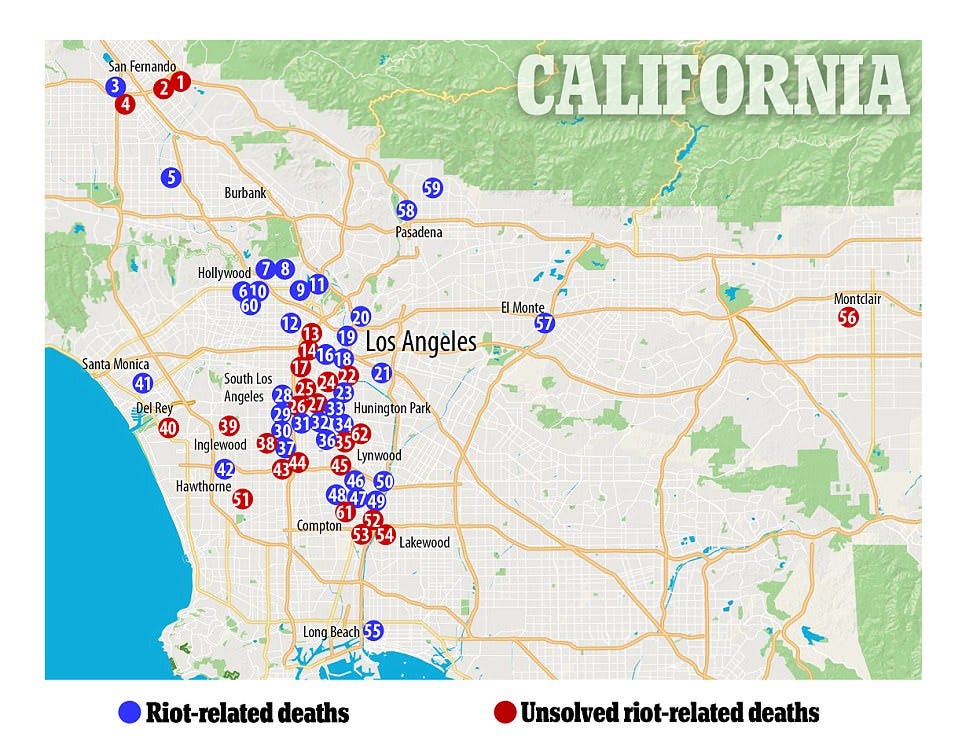
And even for one of the most extreme riots in recent American history (the 1992 LA riots), the vast majority of deaths were not caused by police:
More than 60 people lost their lives amid the looting and fires that ravaged the city over five days starting April 29, 1992. Ten were shot to death by law enforcement officials. An additional 44 people died in other homicides or incidents tied to the rioting. By year’s end, Los Angeles had 1,096 homicides, a record. 1992 remains L.A.'s deadliest year.
So trying to use the argument that “but police killed more people in America” does not really hold up when the vast majority of deaths were due to looting and people getting caught up in the violence.
Then, why did Hong Kong protests turn violent?
Whether most demonstrations in Hong Kong were peaceful or not was admittedly hard to confirm during the days of the 2019-20 protests due to the fact that a lot of misinformation was circulated from both sides. Even with the presence of violent and radical behavior at the height of the protests, the vast majority of Hong Kong people responded in a survey that they viewed radical/violent tactics as understandable:
In June, slightly less than 70% agreed that radical tactics were understandable when the government refuses to listen. That percentage rose to over 90% in the August 4 protests.
A similar poll revealed negative perceptions of the Hong Kong establishment:
Results of HKPORI’s “extradition bill survey” (7/24-26/19; 1,007 respondents, by telephone): (a) Almost 70 percent oppose the extradition bill. (b) The chief executive, the police and the central government are the most important factors contributing to the governance crisis. (c) 60 percent are dissatisfied with the performance of the police in handling the incidents. (d) All the major demands in the antiextradition bill protests are popular, topped by setting up an independent commission of inquiry and complete withdrawal of the bill. (e) Youth dissatisfaction mainly stems from their distrust of the system, as well as their pursuit of democracy and freedom.
The question as to whether or not most of the protests were (or turned violent) was hard to answer in 2019/2020 since there was so much misinformation from both sides as to what was going on. Fortunately, a 2022 Cambridge Study titled “The Evolution of Protest Repertoires in Hong Kong: Violent Tactics in the Anti-Extradition Bill Protests in 2019” confirmed that the vast majority of protests were in fact peaceful. To ensure that the database used was unbiased, the study used an equal number of pro-China and anti-China sources.
Data are derived from both traditional and online news media. Five newspapers with different political stances were chosen, namely Apple Daily, Mingpao, Oriental Daily, Takungpao and Wenweipo. The first two embrace a liberal stance and the rest are pro-China, with the last two being Beijing's mouthpieces in Hong Kong. I also collected data from Stand News, the most popular pro-democracy online news platform. It reports on many small-scale protest actions with rich descriptions. Considering the relevance of information, I included only reportage written by Stand News's reporters and excluded commentaries published on the website. In total, more than 30,000 pieces of news about the Anti-Extradition Bill protests were collected. An advantage of using multiple data sources is that it can mitigate the selection bias and description bias commonly found in earlier works of protest event analysis.
Violent confrontational actions have increased over time, but they still were in the minority. Using the data from the study linked above, here is a pie chart highlighting the frequency of 3 kinds of tactics used in the protests from June to December:
Non-confrontational: Some are meant to speak to the public at large, like group singing or hunger strikes. These kinds of actions are more about raising awareness than targeting anyone directly. There are also actions like petitions or marches in front of government buildings which are classified into this category. These are still peaceful, but they’re clearly directed at someone the protesters want to influence or persuade.
Non-violent confrontational: These are protest tactics that turn up the heat without crossing into violence such as blocking roads or occupying buildings. These actions might cause a standoff with police or other authorities, but they’re not meant to hurt anyone or destroy anything.
Violent confrontational: These are protest tactics that involve property damage or physical attacks.
Here is a line graph showing how this has changed over time, especially in later months.
To hammer home the fact that the vast majority of tactics utilized were peaceful, here is a line graph showing the evolution of non-violent actions vs violent actions over 6 months. Violent confrontational acts have only peaked at ~30% at the height of the protests in November.
The study also highlighted that the escalation of violence was gradual and restrained initially, and not spontaneously caused by “foreign forces” or mere “hooliganism” as a lot of pro-CCP aplogists like to suggest:
Cognitive transformation went hand-in-hand with affective changes. In political conflicts, anger is a crucial emotion for mobilization, but it is also carefully contained to avoid crackdowns. Anger over the police violence had been mounting since the “6.12” clash, but the radical protesters did not immediately respond with violent tactics. Instead, they mobilized two largely non-violent and restrained actions. On 21 and 26 June, they laid siege to the police headquarters. Besides blocking the entrance and nearby roads, they condemned police violence mostly in symbolic terms through, for example, the use of foul language, throwing eggs at the walls and defacing the police emblem with graffiti. Anger towards the police was evident but it was also restrained.
Similarly, another study challenges the official narrative that the 2019 Hong Kong protests were violent primarily because of “agitators” or “muh color revolution”. Instead, it uses the Elaborated Social Identity Model (ESIM) to explain how protest dynamics and police behavior triggered radicalization. The ESIM model, in the context of the protests, shows that crowds are not inherently irrational, their identity evolves based on intergroup interactions, especially with police, and police use of indiscriminate force can change protester identities, increasing solidarity and radicalization.
In contrast, we assert that an ESIM perspective offers a far more powerful explanatory model to describe how the protests and protesters became radicalized. The experience over time of illegitimate and undifferentiated police action created the psychological unity where previously diverse groups with different tactics began to coexist more successfully in order to achieve their common goals. This unity appears to have empowered radical groups perhaps because of the increasing expectation and realization of common support
Human rights groups confirm that HK police were brutal. Deal with it.
An Amnesty International report has found that the Hong Kong police was excessively brutal during the June 12 protests, thereby prompting two of the five demands: to not label the protest that day as a riot and to begin an independent investigation of the Hong Kong police.
Amnesty International has collected footages and verified 20 of them concerning 14 incidents of excessive use of force by the Hong Kong Police on the ground during the mass protest. This non-exhaustive collection of videos draws upon extensive media coverage and social media posts by local and international press organizations, civil society groups and people in Hong Kong. Based on our careful examination of these incidents, we find that the use of force by police in the largely peaceful protest that took place on 12 June violated international human rights law and standards
Before people dimsiss it as mere propaganda, note that Amnesty has recognized Israeli actions as genocide as well as wrote reports on US police brutality so it’s not like they’re only critical towards anti-Western regimes.
It should be noted that even the Hong Kong High Court ruled that the police complaint system was ineffective at dealing with potential human rights issues:
Hong Kong's High Court ruled on Thursday that the city government had failed to provide an independent mechanism to handle police complaints, breaching the Asian financial hub's Bill of Rights on torture and cruel treatment.
Once a while, some pro-CCP apologists like to cite surveys from Western think tanks to prove that even the West thinks that no police brutality exists. For instance, various Chinese state media have cited the Fraser Institute’s (a libertarian think tank) Human Freedom Index in 2019 to demonstrate that Hong Kong Police were more reliable than American ones. However, according to a fact check, they only used 2017 data:
The HFI is the most comprehensive freedom index so far created for a globally meaningful set of countries. The HFI covers 162 countries for 2017, the most recent year for which sufficient data are available. The index ranks countries beginning in 2008, the earliest year for which a robust enough index could be produced.
Furthermore, even the Fraser Institute has responded to these claims, calling them misleading:
In an email to AFP on January 24, 2020, Fraser Institute Resident Fellow Fred McMahon said the HFI 2019 had been misrepresented in the misleading articles and social media posts.
He said he expected Hong Kong’s score for the reliability of its police force to “decline greatly” in future studies, based on data from the World Economic Forum (WEF).
Commenting on the Hong Kong Police Force’s position in his think tank’s study, he said: “That almost certainly would not be true now. The size of this round of demonstrations and the recent election results strongly suggest the public continues to support the demonstrators, which also implies the public is not onside with the police and their heavy handed tactics. Surveys from the University of Hong Kong show strong disapproval of police.
For those who want to see a glimpse of some of the dehumanizing things the Hong Kong Police/Government have said to fuel the flames, here’s a fun educative quiz that highlights the similarities of Chinese/Hong Kong government and Nazi German rhetoric.
Conclusion
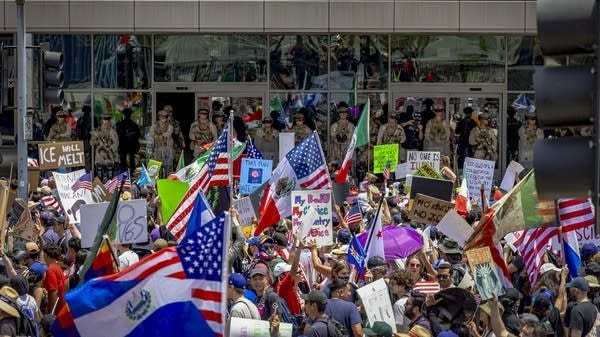
The point of this analysis is not to downplay the militarization of police in the US nor to minimize the effects of Trump’s current blatant attacks on the US constitution as we speak. While these are serious issues the American people can (and are) dealing with in various social movements (such as the George Floyd protests), it is asinine to compare the suppression of democracy in a hybrid regime/authoritarian state with social issues in a flawed democracy. Of course, who knows what could potentially change if Trump continues to erode constitutional rights.
I will close off this article with the Wikipedia article on police misconduct allegations for more evidence of police brutality, which cites various news sources like SCMP to make its case. Since this is Part 1 in a series on the Hong Kong Protests, I will not do any very detailed debunks pertaining to Hong Kong Police Brutality, just merely highlighting why comparisons used to downplay Hong Kong Police Brutality (especially casualties) are stupid. The only valid comparison people should make is that police brutality is a crime everywhere (funnily enough, the US trained Hong Kong Police pre-NSL).
This encompasses Chinese ultranationalists (often derided as 小粉紅) and tankies, with the latter being more ideologically committed to leftism/communism as a whole.
And to a lesser extent, the Occupy Central movement back in 2014.
Admittedly, whataboutism only works in the context when having conversations that compare the US/West/capitalist nations with China/other communist nations. Other than that, whataboutism can be considered a logical fallacy.
This video, while quite long, does give a good context on the “color revolutions” in the context of Russia and how most fearmongering about protests against anti-Western regimes is mostly BS.
Technically, there is no actual figure or even an estimate for total participation for the Hong Kong protests from 2019 to 2020. However I am trying to be lenient so I kept it as reasonably low as possible by using 2 million.



